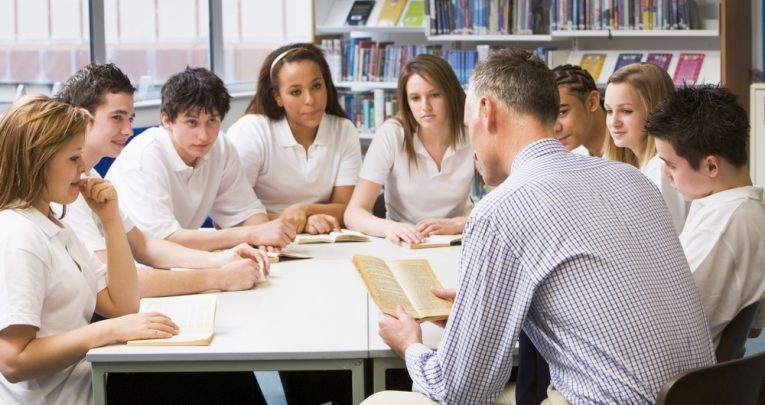Stop, Think, Speak – Secondary Teaching And The Art Of Communication

Adam Riches and Roy Watson-Davis talk us through the art communicating clearly with groups of 'feisty, complicated teenagers'…

Speaking is an art – and in the classroom, communication is king.
What we say and how we say it can have a huge effect on the person or people we are talking to, especially when standing in front of a group of feisty, complicated teenagers. What we often forget is that words are easily interpreted by different individuals in various ways. A phrase as simple as ‘Just listen’ could focus one person, but create a huge conflict with another.
Good communication between you and your class can make the difference between an outstanding lesson and absolute anarchy. So as classroom practitioners, what can we do to minimise miscommunication?
Spell it out
The first lesson for classroom communication is making sure you’re on the same level as the students. Most pupils don’t have the same order of language as a graduate or adult, so the first thing to do is avoid using words which they simply don’t understand…unless you explain them.
The art of semantics is difficult in English, as words can often shift in meaning or be encompassed in shrouds of occupational ambiguity. When you explain and disambiguate words for young people they are able to learn, understand and build a rich subject vocabulary. In turn, this will encourage them to become more engaged – basically because they’ll get what you’re talking about.
It’s easy to be alienated simply by not understanding what is being discussed. As a teacher, it’s imperative to think before you speak and to slowly build subject vocabulary before launching into any explanation that could leave half the class baffled. Let’s give the kids a chance.
Different voices
Another area is prosody. This refers to the tone of voice, which is a tool that teachers naturally develop over time. NQTs and teachers new to the trade will quickly realise that prosody can be useful, but also dangerous if used incorrectly. Tone is something a teacher must harness – a natural tone for general interaction, a deeper one to get attention and lighter to show compassion.
Figuring these three out will help in most situations, and as time goes on you’ll find ways to modify your existing repertoire. Keep in mind, though, that your tone needs to be clear. Pupils will respond to different tones and become confused if you aren’t consistent.
To denote a sense of disappointment, you may wish to drop your tone slightly. In contrast, to show your excitement about a response or a piece of work you may wish to heighten your tone. Set out your stall early on – it will benefit you in the long term.
Using a tone shift instead of a volume shift will yield some interesting results, not to mention saving your voice. This, after all, is your most valuable tool in the classroom, so looking after it is very important. A variation of tone will allow your vocal chords some rest and heavily reduce strain on the throat. A constantly raised voice is not sustainable, so talk smart.
Turn the dial
Closely linked to prosody is volume. You can’t expect raising your voice to be a wholly effective way of dealing with conflict, and it can be highly detrimental to your vocal health. More often than not, a raised volume will escalate problems – don’t fuel the fire.
Young people can’t control their emotions as well as adults, so an effective strategy in the face of rising irritation or distress is to speak more quietly. This can de-escalate the situation, as it’s impossible to argue with somebody who’s not responding.
Children mimic what is in front of them. Keeping your volume low creates a passive front, which is a great way of quelling aggression. Conflict situations arise in the quest for attention, either positive or negative, so make sure what you give is the former.
Fair exchange
Transactional communication (the exchange of information) should make up the bulk of any lesson, but don’t neglect interactional communication (building social relationships) – “How was the weekend?”; “You had a haircut?”; “Nice new coat.” You would not believe how productive this can be with a 15-year-old.
Aiming to show each student a touch of interactional interest will build connections and create a safe, caring learning environment. It’s not being ‘soft’, or ‘inappropriate’, it’s normal – unless you think your job is to prepare young people for a life of rote and rigid routine which consists of no interaction with others.
The world is changing, and as teachers we need to make sure that we alter with the times too. Pupils are humans, not numbers or subjects. Making students feel valued is a powerful thing; language can be a tool for building bridges, rather than barriers.
Adam Riches has taught for five years; he is currently head of KS5 English language and the whole school literacy coordinator at Northgate High School, Ipswich.
Roy Watson-Davis has 25 years’ teaching experience; he is currently head of history/SLE at Northgate High School and author of the titles Creative Teaching, Form Tutor and Lesson Observation for Teachers’ Pocketbooks











